
希望探索媒介的各種可能,也希望做個一輩子的記者。Matters站長。
49 days, how did the anti-extradition movement in Hong Kong reach the critical point?
Written in front:
This article may not be able to answer questions such as "why the black man beating the white man was not reported by the media", "what is the truth about the beating at the airport", "he Junyao's grave was dug up, why the media didn't condemn the demonstrators", "is there anything wrong with the police enforcement". I know that these issues are spreading very enthusiastically on the Internet in mainland China. I have been unable to face and answer these questions before, but after sorting out this article, I seem to have gained a little energy, and I can continue to write a QA, specifically for Hong Kong in the Chinese context, and write my answer. But for this article, let me return to Hong Kong first, return to the movement itself, and do a general review from the points that I think are particularly impressive and worth recording.
Where does the movement's popular support come from? I wrote the previous article . In this article, I will sort out how the movement has progressed from the evolution of the six protest slogans and the five strategic changes of those in power. In a decentralized movement, the slogan was put forward by the anonymous protesters themselves, and its evolution is a manifestation of the state of collective resistance; while the strategy changes of those in power can see the gradual evolution of the repression script. In this campaign, everyone who experienced it can have their own memory and way of precipitation. I hope that more people will write about their own summer together.
text:
"This is a battle of wills." A few days before July 27, two Hong Kong people said the same thing to me.
From June to July, they come out to parade almost every week. During the day, I walk several kilometers under the scorching sun with hundreds of thousands of people. At night, I sneak into the night, occupy the road, surround the government, and stand next to strangers in black. police standoff.
These two friends were not frequent participants in parades in the past, and their action philosophy is what Hong Kong people often say "和理非" (peaceful rationality and non-violence). This time, they had eaten tear gas several times, but they had never collided with the police, were far from the front line, experienced the dark night of Yuen Long, or encountered violence from the underworld. They usually leave the scene at 12 o'clock when the subway stops and go home. They try to stay longer at night, just worrying about the young people in the front line who are wearing helmets, masks, plastic wrap, holding water bottles and umbrellas. .
They are very common faces in this movement: unknown, middle-class, living a stable life, seeking justice in everything, and cherishing Hong Kong.
Like others, they did not expect that they would not have time to go on vacation this summer, and their souls seemed to be trapped on the three-kilometer road from Western District to Wan Chai, wandering between the Government Headquarters, Police Headquarters, the Legislative Council Building, and the Liaison Office of the Central People's Government. . Even if you are on vacation, you are still in a picturesque place, scrolling through Facebook, Linkedin, and live broadcasts all the way, feeling anxious. They also did not expect that in this summer, they would learn so many strange knowledge about weapons, first aid, law, privacy, and protest sign language that they never thought of in peacetime—what is the difference and damage between rubber bullets, bag bombs, and sponge bullets? How to set telegram not to be traced? What are the gestures of adhesive tape, drawstring, and plastic wrap? A protester who fell into depression and had suicidal tendencies disappeared, how can he be rescued?
From June 9th to July 27th, for 49 days, millions of people took to the streets to march peacefully and oppose the revision of the extradition law, and the movement spread like water across the city. Due to the amendment incident and the way the government responded to the protests, Hong Kong people have long worried about the damage to the core values of freedom and the rule of law. At the same time, there is no central leader in the movement, showing a state of "no big platform". Every participant participates in a self-organized manner, with a strong sense of participation and belonging. Everyone finds their own role and "does everything" in their own position. These two key factors make the movement continue to explode with unprecedented levels and energy.
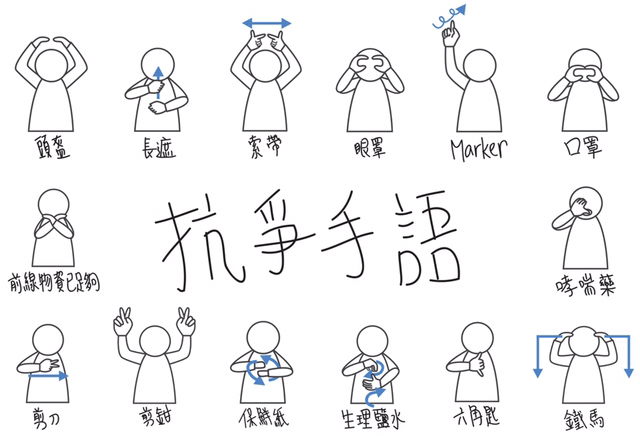
So, throughout the movement, you see a widening spectrum of action: from the most benign "Lennon Wall" that publicizes district walls as venues for expression, to the peaceful and non-violent mode of marches with police permission Assemblies, hymn-singing rallies without application but borderlines, shopping group rallies, civil disobedience mode-occupation, road blockage, siege, all the way to the "valiant" mode-destruction of iconic public properties (such as the Legislative Council gates, national emblems with symbols of sovereignty), the use of force is not excluded in conflicts with the police.
The mainstream society in Hong Kong has always been peaceful and rational. In the past, the use of force in demonstrations (mainly referring to behaviors such as police throwing water bottles and vandalism) was extremely low. Companions around him condemned. But in recent years, as Hong Kong people's trust and acceptance of the government's governance system has gradually decreased, mainstream society has become more and more accepting of different spectrums of struggle. This time around, many people, even if they had never been on the front lines, felt sympathy for the radical protesters.
In motion, you can also see the space of motion spread with time. In addition to the routine parade route from Victoria Park on Hong Kong Island to Central, which Hong Kong people are familiar with, and Admiralty Harcourt Road, which was occupied by the Umbrella Movement five years ago, the non-central nature of this movement has also spread the scenes of rallies, parades and even conflicts to Wan Chai, Sheung Wan, and Western Ring on Hong Kong Island, Tsim Sha Tsui, and Mong Kok in Kowloon, Sheung Shui, Sha Tin, Yuen Long, and Lantau Island in the New Territories, spread from street space to large shopping malls, subway stations, and airports. The Lennon Wall, which expresses opinions, has blossomed all over the 18th district, transforming the traffic, consumption and residential community spaces that citizens often pass by into public spaces at any time.
We have seen a movement that is very discrete in form but extremely united in its core, and what it is facing is a ruling party that is extremely solid in form but loose like dominoes in its internal structure. As the campaign continued, the game and tension between the two sides continued to escalate. Now on the 49th day, no matter who is in it or not, people can feel from the large number of threatening rumors from China (the People's Liberation Army has entered the city), the opening of the public opinion war, and the eagerness of the centrists to express their views. The end is near.
No one knows what the end point will look like.
But we know that just as resistance is not scripted, the end is not destiny. Looking back on this movement, sorting out how the two sides turned the situation upside down step by step, and what will be deposited for Hong Kong in the future, these are the keys to how Hong Kong will go on after the end.
This article provides a perspective, from the evolution of the six protest slogans and the five strategic changes of those in power, to sort out why Hong Kong has come here in the past 49 days.
1. "Never withdraw, never disperse"

If you don't withdraw, I won't leave. This is the most mainstream slogan throughout the movement. It concentrated on June 16, the second parade with more than one million people. What it targets is that Chief Executive Carrie Lam Cheng Yuet-ngor announced at a press conference at 3 pm on June 15 that the revision of the extradition bill would be "suspended".
On June 9, a million-person demonstration broke out in Hong Kong to oppose the revision of the extradition law. The scale of this demonstration broke the historical record since the handover of sovereignty. It far surpassed the 500,000 people who took to the streets in 2003 to oppose Article 23 legislation. And that night, after the turmoil of the whole day, the crowd still gathered in Admiralty and Central near the end of the parade, and when they did not disperse, the government responded with a very brief statement, to the effect: Many people marched, We have seen, um, "The bill resumed its second reading debate in the Legislative Council on the 12th of this month". Immediately afterwards, the anti-riot police were dispatched, mainly using batons and pepper spray, to forcefully clear the young people who had peacefully gathered in the demonstration area near the Legislative Council and had not yet dispersed.
In the face of boiling public opinion, the government's simplistic handling and tough suppression made the protesters angry. Three days later, public opinion surged again on a large scale. On June 12, Admiralty reproduced the scene of the Umbrella Movement five years ago, and Harcourt Road in the heartland was occupied. But this time, the government obviously did not intend to allow the continued occupation to take place. At 3:00 p.m. that day, the police deployed unprecedented force and intensive suppression: within 2 hours, 150 rounds of tear gas, 20 rounds of bag bags, and several rounds of rubber bullets were fired. The demonstrators were shot in the eye and were seriously injured close to blindness; this is several times higher in density and intensity than the suppression at the beginning of the Umbrella Movement five years ago. The police quickly characterized the peaceful occupation on 612 as a "riot" (later changed the name), and searched for demonstrators in hospitals. Tough measures have made the situation out of control: the demands of the angry people are no longer limited to the withdrawal of the regulations themselves, but also demand the investigation and investigation of the abuse of power by the police force. This also makes it difficult for the movement to end.
On June 15, Carrie Lam made concessions and "suspended" the regulations in order to appease the people. But this time is not June 9. After the fierce force of 612, at this time, this word has been unable to stop the demonstrators.
"If you don't withdraw, you won't disperse", people shouted this slogan on the street, and it continues to this day.
2. "No injuries, no bloodshed, no arrests/no cuts, no ashes, no accusations"
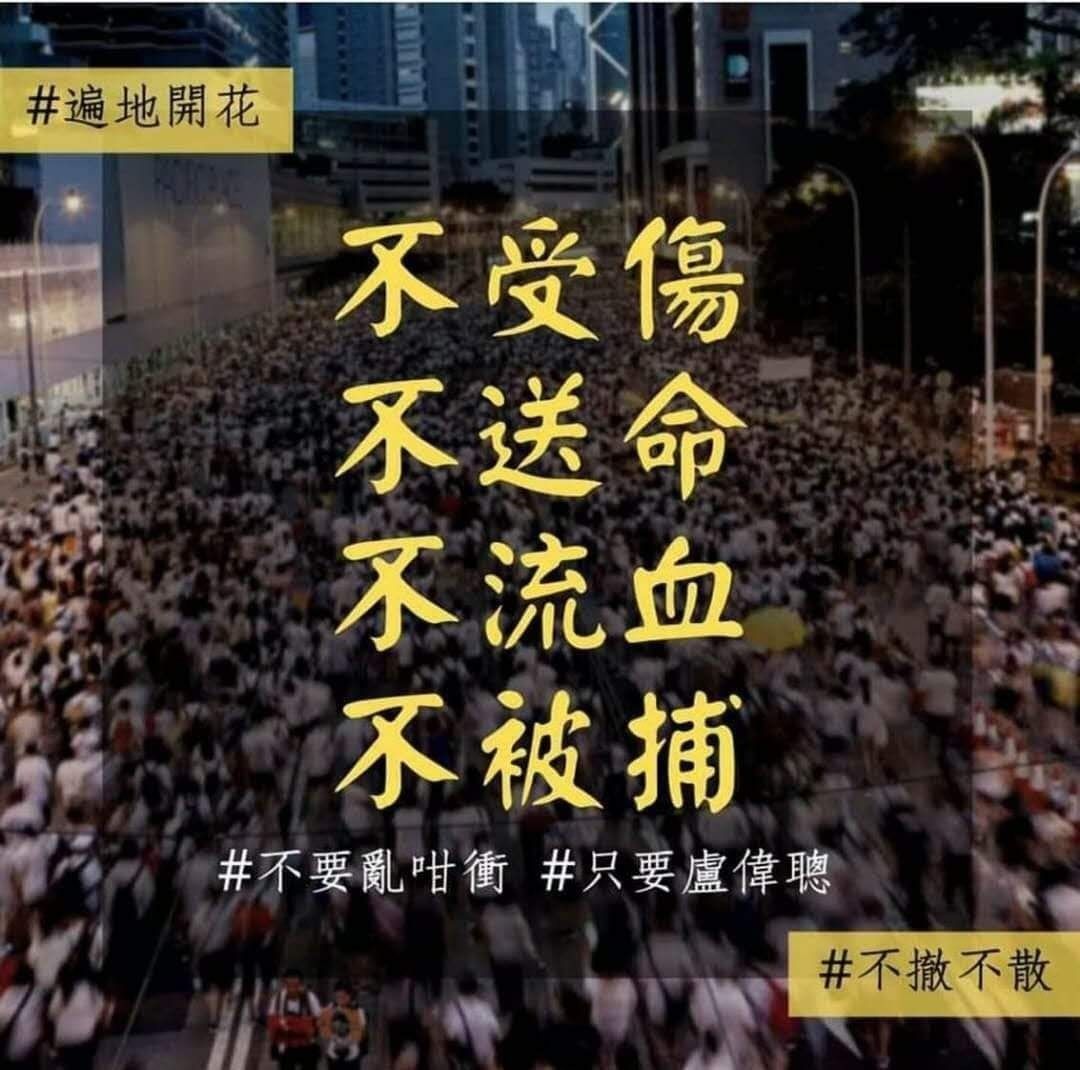
This was the most important slogan in the first half of the movement, and it appeared on a large scale, just after the occupation and the clearing by force on June 12.
On this day, people realized that if the parade is not over, it is a movement that will continue. But what is its form? Do you want to continue the march? Occupy? Civil disobedience? Shock? Who has the final say? At the time no one knew. However, around June 12, countless people spontaneously started discussions on the Internet and on-site, and the state of "no big platform" for the movement has initially taken shape. How can we unite without a leader? Without a center, how to gather together? Everyone became aware of the problem almost spontaneously, and when there was no leader to tell you what to do, everyone started to find their own solutions to the movement's problems. The juxtaposition of these six words was generated gradually and iteratively during people's running-in and discussion.
The first three words, "No injuries, no bloodshed, no arrests" are addressed to the frontline demonstrators. These three do not include the understanding and tolerance of the "brave struggle" line, which means that young people are on the front line, and the movement has no command. They must take care of themselves. Retire, don't love to fight, don't be arrested, the future will be long. The last three words are to the protesters who are not on the front line. They may watch from a distance at the scene, or watch the live broadcast at home. , Don't suspect that you are an "inner ghost", and don't just accuse the front line of being too aggressive.
The emergence of these six words, on the one hand, stems from the fact that there is no central command in this movement, and each participant needs to take care of himself in each position and unite with each other’s inner demands; It is a painful lesson that the nativists and democrats attack each other, and the non-violent line and the armed resistance line attack each other.
The emergence and extensive use of this slogan has established the basic atmosphere of the entire movement: don’t occupy, don’t push hard, retreat when you are dispersed, and come back again. By teaching people the facts, everyone cooperates in their respective positions. The front line reflects the will of the movement, and the rear area strives for the support of the general public. It is this kind of movement self-awareness that appeared very early that made the whole movement almost miraculously overcome many traps and crises, and is still united and full of creativity.

3. Brothers climb the mountain and work hard on their own
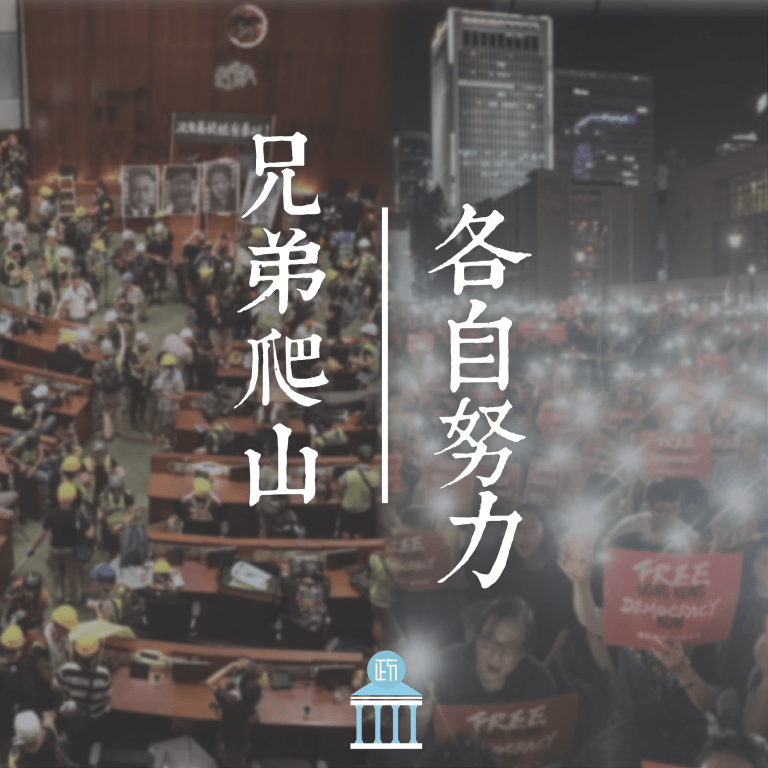
This is not the slogan of the protest scene, but it is the most popular sentence on the Internet, and it also began to appear in large numbers after 612.
The "six nos" are addressed to the movement scene, and this sentence is to be addressed more broadly to all protesters. When there is no command, the only thing that unites the protesters is the "mountain"—that is, a common goal. This goal includes the core demands of the movement, as well as the core values behind the demands. "Brothers climb the mountain, each working hard" appeals that as long as there is the greatest common divisor, people can work hard in their own positions. Whether it is in sports or in daily life, it is enough for you to do your best in your usual professional position and social role to practice the values that the movement believes in—protecting freedom.
If the slogan "Six No's" united the protesters to the greatest extent at the scene, then "Brothers Climb the Mountain" means that people bring the movement back to their daily lives and completely blur the boundaries of the movement. Decentralized, so there are centers everywhere, and there are no squares, so there are squares everywhere. This can be achieved precisely because of the hard work of countless ordinary people in their professional positions - medical care, fire protection, social work, academics, law, finance, marketing, international affairs, language translation, visual design, news, music, engineering construction, etc. As a result, we will see that, in the absence of leadership, in just 49 days, such phenomena as super-large-scale demonstrations, multiple guerrilla occupations, millions of crowdfunding advertisements, G20 Campaign, large and small There are countless creative projects, spontaneous rescue teams, material groups, psychological rescue groups, etc., initiated by unknown people, with world-class creativity, efficiency and execution.
4. Be Water

The Los Angeles Times first compared the Hong Kong anti-extradition movement to a super AI that can learn by itself, like an ant colony or a bee colony, relying on everyone's open self-learning to cooperate with each other. Hong Kong people themselves chose Bruce Lee's way of speaking: be water.
As a martial arts star, Bruce Lee was born in philosophy. When he was interviewed by an American talk show in 1971, he once said such a charming oriental sentence: "Empty your mind, be formless, shapeless, like water. Put water into a cup. Becomes the cup. Put water into a teapot. Becomes the teapot. Water can flow or creep or drip or crash. Be water my friend.”
A pivotal turning point for the movement came on June 21 when protesters surrounded the police headquarters. From this day forward, the phrase be water, which was occasionally mentioned in online forums, was brought to the scene to remind myself. Afterwards, it was also used by more Hong Kong people as a slogan and hashtag to describe the movement.
On this day, in order to express their dissatisfaction with the police's use of excessive force and alleged abuse of power, tens of thousands of demonstrators surrounded the police headquarters in Wanchai that day. This is the first time in the history of Hong Kong that someone surrounded the police headquarters. The police are on high alert, and the demonstrators are also highly nervous. Democratic lawmakers, social workers, and pastors are all trying their best to mediate. Everyone is afraid of bloody conflicts. easy. And miraculously, despite the high anger at the scene, all the young demonstrators wearing masks spread word of mouth: "You can stay, you can go, but you must not rush", "Be Water". The crowd is crowded, and in order to avoid information bias, they invented various gestures to convey information: masks, goggles, and water are needed in front, sit down, rest in the back, back up, don’t rush…. In the middle of the night, when the conflict is most likely to intensify, the demonstrators proposed at the scene to vote to decide whether to stay or not. Although the vote failed in the end, the crowd still followed the principle of Be Water and dispersed like water. When the Legislative Council was occupied on July 1, this scene reappeared: Masked demonstrators spent five or six hours breaking down the gate of the Legislative Council, but they were able to disperse peacefully before the police cleared the venue at 12 o'clock. The four "dead fighters" who did not want to come out were "robbed" by off-site supporters. How did all this happen? Not only were the people on the scene amazed, but even observers from all over the world who watched the picture were amazed by this flexibility.
According to Bruce Lee, under what circumstances can you not care about the shape of the cup or pot, but only care about the water? It is you who have full confidence in the water, and you know that the water will not leave you. Going back to the movement, be water can become a slogan, provided that the movement believes that the hearts of the people are with me.
In fact, the anti-extradition agenda has always had more than 60% public support. This is the premise that the movement can be water, and it also contrasts the government's response, which seems cumbersome, slow, and particularly weak.
5. All go up together / No one can be missing
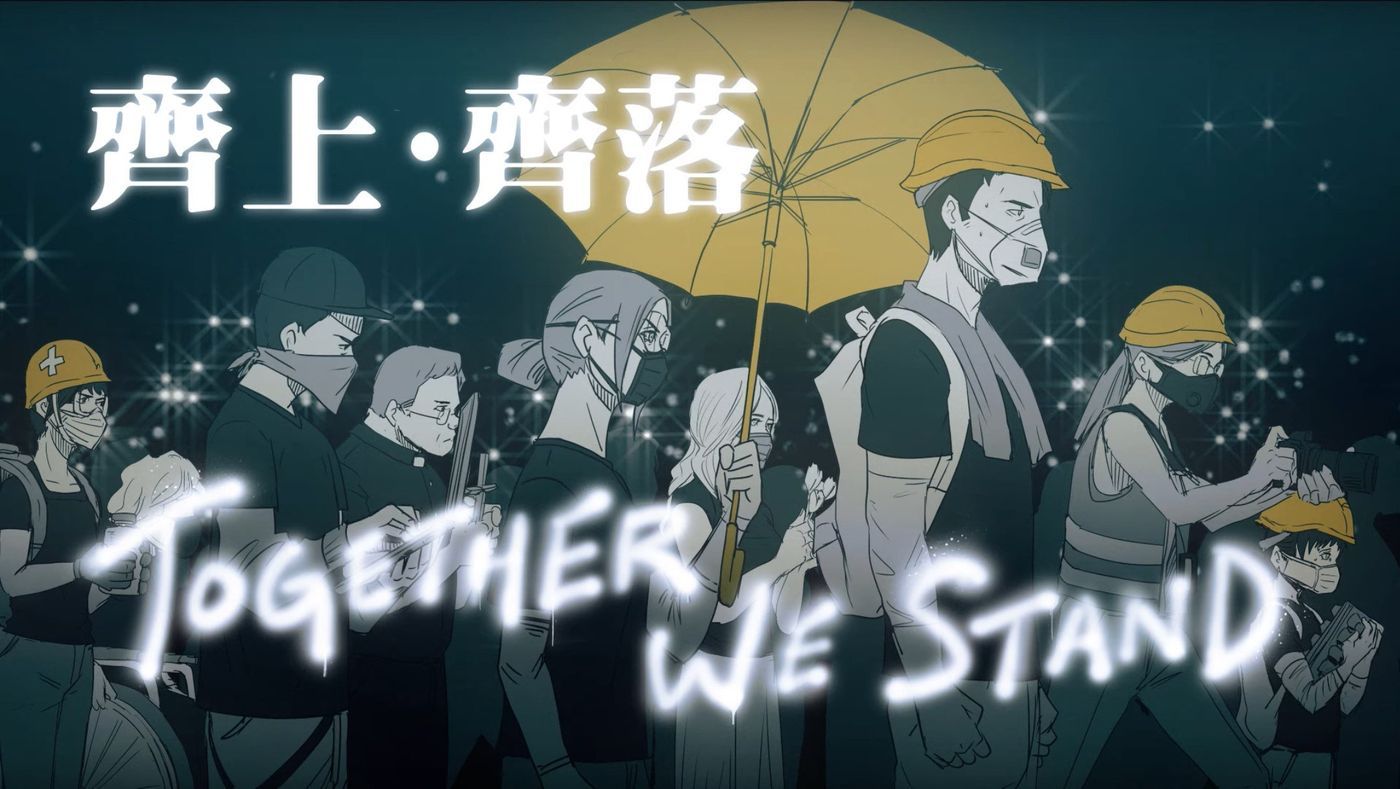
On June 16, the parade of 2 million people had an additional slogan: "Not one less". Demonstrators also switched from white to black for the first time.
Because the night before, a demonstrator committed suicide in Admiralty.
35-year-old Liang Lingjie, wearing a yellow coat that symbolizes democratic demands, stood on the edge of the scaffolding of a parking lot about 10 stories high in Admiralty for five hours. A banner with "No Extradition To China" was hung beside him, with appeal slogans such as "Withdraw China completely, we are not a riot, release the injured students, Carrie Lam step down, Help Hong Kong". When the police, firefighters and members of the Legislative Council at the scene failed to persuade him, he jumped off the platform and died.
This is the first person in the movement to commit suicide after clearly expressing his political demands. Later, as the movement became tense, at least four participants in the movement committed suicide after publishing their suicide notes related to the movement’s demands on social networks. Another participant had a dispute with his family after returning home from the protest. It is suspected that he fell to his death from a tall building drunk, and it is difficult to judge whether he committed suicide.
The death of five demonstrators cast a heavy shadow over the movement. It inspires pessimism on the one hand and anger on the other.
The diffusion effect of social networks has prevented suicides from being spread and discussed within the framework of traditional news ethics codes. In late June, pessimism and despair spread on the Internet, and the psychological rescue hotlines of major institutions appeared 20-30 a day. During the outbreak of help-seeking cases, and all districts found people who wrote suicide notes on the Internet in advance and declared that they would commit suicide. Professional social workers and netizens formed large and small rescue teams, exhausted, and went to possible places in each district to find people. , persuasion, rescue. "Not one less", everyone shouted to their fellow travelers offline and online.
On the other hand, the cost of human life also injected more decisive anger into the frontline protesters. More than one frontline protester expressed his will to die in an unpublished interview: I have already lost my comrades in arms, and I will not back down, whether it is bullets or crimes of rioting, I will not back down again. The movement's front-line conflicts are therefore becoming more intense. It is becoming more and more difficult for the police to repel the demonstrators. The pepper spray will not retreat, the batons will not retreat, the tear gas will not retreat, and the rubber bullets will not retreat for a long time. The tension of the entire movement is pushed to the extreme at this stage.
It was in this situation that the demonstrators in the rear shouted the slogan "Let's rise and fall together". Like the scene in the 71 Legislative Council, when a few "dead men" refused to leave, the majority would snatch them away. "Let's all go together, not one less." After July, this kind of united will, with a heavy will to die and a comrade-in-arms friendship, became the main theme of the movement.
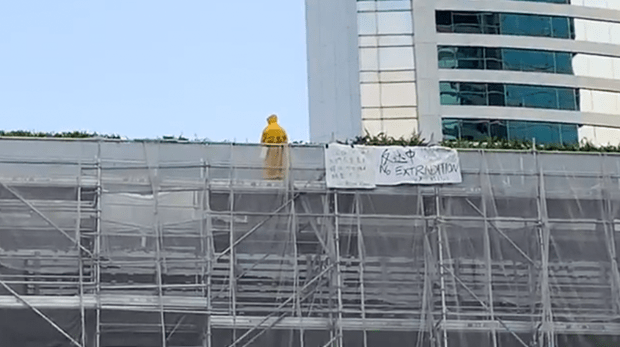
6. Restoration of Hong Kong, revolution of the times

The time has come to the end of July, and the situation of the movement has never been more tense.
In mid-July, when I was in the Lennon Tunnel in Tai Po, New Territories, I saw the words "Liberate Hong Kong, revolution of the times" for the first time, and my heart skipped a beat. On the night of July 21 in Sheung Wan, the night when demonstrators surrounded the Liaison Office, threw eggs and splashed ink on the Chinese national emblem, it was also the night when the police fired 55 tear gas bombs, 24 sponge bombs, and 5 rubber bullets. At the scene, the slogan loudly shouted by the young men in black was "Recover Hong Kong, revolution of the times".
This is the slogan that Liang Tianqi shouted after the riots in Mong Kok 5 years ago. This is also one of the campaign slogans of the 24-year-old running for parliament. At that time, he advocated "resistance to violence by force" and "recovery of Hong Kong". At the same time, he provoked the two most sensitive nerves of Hong Kong's mainstream society and the authorities were most alert and disgusted. One was advocating force, and the other was Hong Kong independence. These two points are also rejected by the main body of the democrats in Hong Kong. The protests called by the traditional democrats have always been non-violent, and they are not isolated from China, and they even want to participate in the construction of a democratic China. Liang Tianqi did not win the election, but received 66,000 votes, mostly from young people.
He and the radical local forces he represented in Hong Kong had many young supporters. However, in the following years, they encountered severe suppression in the political space. Members were disqualified from DQ and associations. The court sentenced him to the crime of " assaulting the police " and "participating in riots" during the riots in Mong Kok. He was sentenced to 6 years in prison and placed in custody immediately. This year, he was 27 years old.
In mid-to-late July, as the anti-extradition movement penetrated into various communities, the spectrum of action became wider and wider, and the mainstream society's tolerance for "force" also increased. More and more young people are beginning to think of Liang Tianqi, this fleeting young political leader. "Liberate Hong Kong, revolution of the times" as a slogan began to appear on Lennon Walls in Sha Tin and Tai Po, and sometimes "Thanks to Leung Tin-ki" was written next to it, until it was shouted out at the scene of the most intense movement.
The complex meanings of these eight characters are difficult to explain in the context in which Liang Tianqi used them. Shouting this slogan is more like protesters who are still at the forefront after dozens of days of fruitless movements, calling for a strong desire for escalation of action and revolution: This generation wants to make Hong Kong a Hong Kong for Hong Kong people. There is a more popular Cantonese expression "Lanchao", which was also popular during the same period, or it can be understood as a footnote of "Recovering Hong Kong, Revolution of the Times". "Lanchao" means burning jade and stone together. An English slogan on Lennon's wall explains it simply and clearly: "If we burn, you burn with us."
In the second half of the movement, when the slogans of the protesters gradually overwhelmed and even replaced the previous slogans of be water, no bloodshed, and no cut seats, everyone could feel that the critical point of the movement was approaching.
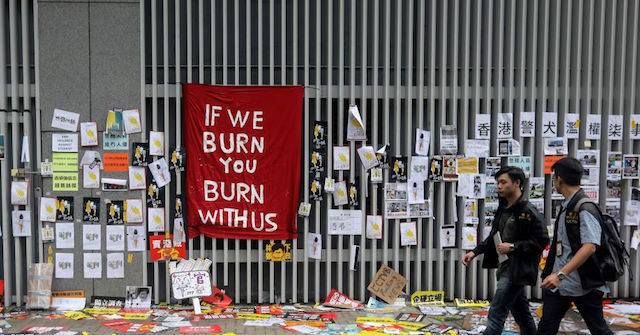
Another signal of the critical point comes from Chinese officials.
Five Stages of Official Policy Evolution
Beginning in mid-to-late July, China’s propaganda machine was activated. Previously, the censorship mechanism was used to isolate Hong Kong’s news, and now it releases distorted and faked clips back to the mainland, inciting public opinion to hate Hong Kong, and quickly created a “People’s Liberation Army” on the mainland’s Internet. Why don't you take action and take care of it?" The atmosphere of public opinion. Xinhua News Agency, the Ministry of Foreign Affairs, and the Ministry of National Defense all have varying degrees of toughness and threats to the situation in Hong Kong. At the same time in Hong Kong, unknown forces have begun to catalyze violence. The National Emblem of the Liaison Office of the Central Committee of the Communist Party of China was splashed with ink to provoke the emotions of 1.4 billion Chinese people, and the indiscriminate attacks by the underworld in Yuen Long made the society panic. Both happened in the middle of the night on July 21. In front of the movement, it seems that a dark passage has been opened.
This official action is also not without context. From June to July, the leaderless protesters developed a first-class mechanism of self-growth and evolution, nested with it, was the evolution of the script of the party in power. The party in power here is of course not just the Hong Kong government. From the beginning of the June incident, the Hong Kong government has been unable to make independent decisions. On the one hand, Beijing is pursuing the issue of intelligence failure from the Hong Kong government, the pro-establishment faction, and the entire Hong Kong and Macau system without warning. On the one hand, it is necessary to directly supervise the battle behind Carrie Lam and formulate strategies.
Judging from the results, strategy evolution can be roughly divided into five stages:
The first stage: From June 9th to June 12th, the Carrie Lam government tried to suppress the protest in its infancy and forcefully push forward the law, but it completely miscalculated public opinion and organized the movement differently from the past. The strategy failed, triggering a bigger and more determined public backlash.

The second stage: On June 15, Carrie Lam made concessions for the first time and announced the "suspension" of the amendment. But at this time, the critical opportunity for the first concession has been missed. Not only did it fail to appease public opinion, but it brought about a bigger explosion. Failed again.
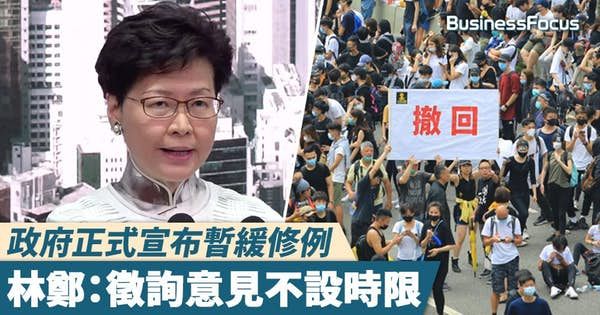
The third stage: June 16-July 9, cold treatment. There are reports that Beijing is collecting intelligence from various sources and formulating new strategies for Hong Kong. At the movement level, it is waiting for public opinion to reverse and accumulating the legitimacy of the suppression by not responding, ignoring, avoiding conflicts, or even allowing the movement to get out of control. The 6.21 siege of the Police Headquarters and the 71 storming of the Legislative Council all happened at this stage. But apart from the image of smashing the glass door, because of the aforementioned "water-like" characteristics, no violent conflict broke out, nor did it cause a significant reversal of public opinion.
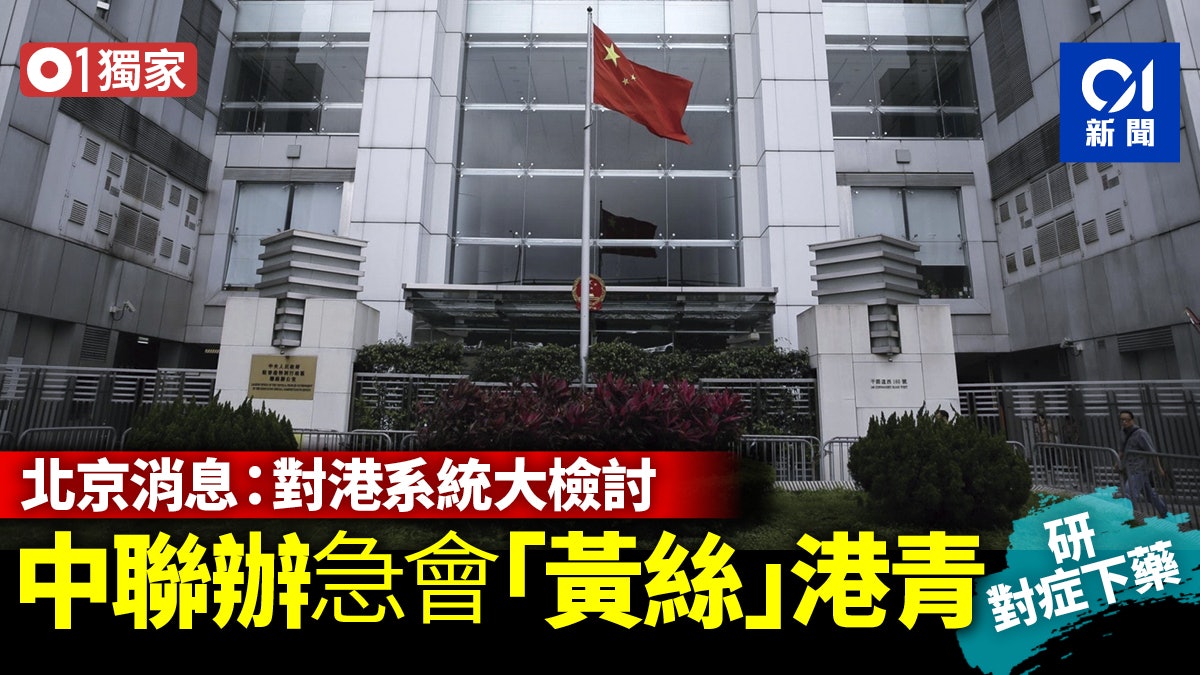
The fourth stage: On July 9, after the July 1 storming of the Legislative Council, as if in order to prevent further damage, Carrie Lam made a second concession, announcing that the amendments were "end of life." However, at this point in time, the accumulated grievances of the confrontation between the police and the people, the grief and anger of the suicide wave, and the rhetorical treatment of the "Withdrawal Regulations" have been unable to satisfy the protesters. Movement cannot end.
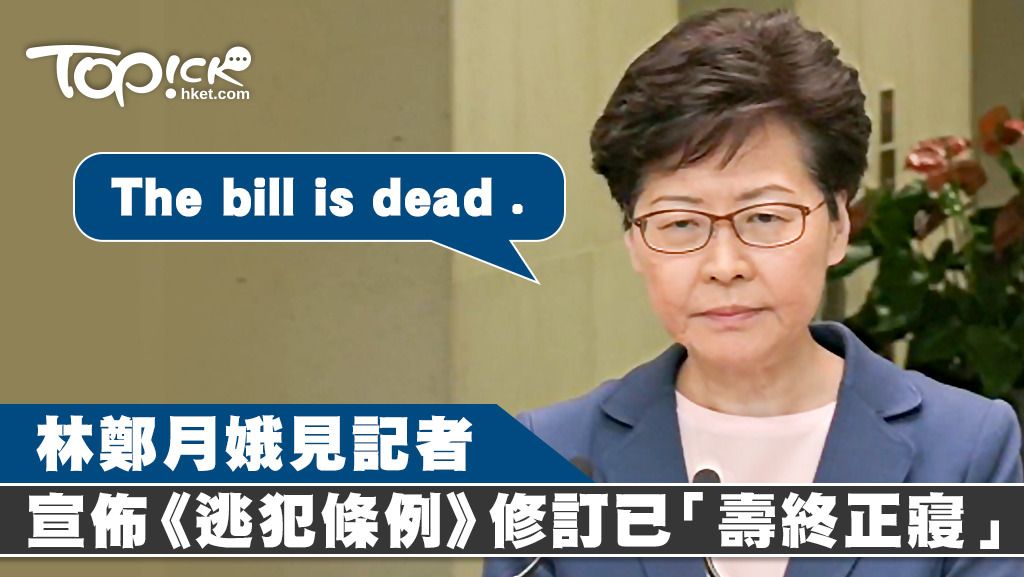
The fifth stage: In mid-to-late July, as mentioned above, China’s propaganda machine was activated to incite public opinion to hate Hong Kong. At the same time, in Hong Kong, unknown forces began to catalyze violence. On July 21, the dark night of Yuen Long seemed to open a dark channel for the movement. On July 27, a large number of demonstrators went to Yuen Long to express their indignation at the merging of police and gangsters, and the police forcefully cleared the scene.
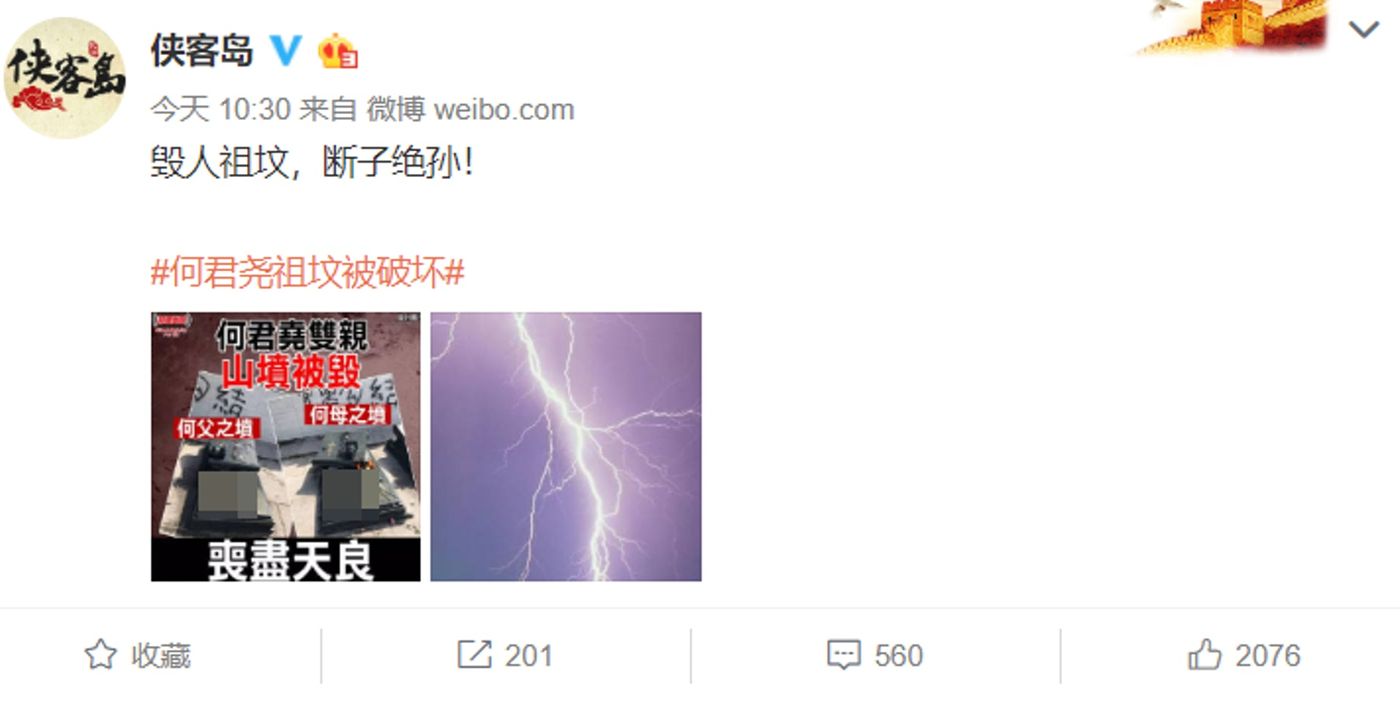
People who are familiar with totalitarian governance machines are full of worries about the development of the above-mentioned stage. If this script is pushed forward, it seems that it is easy to move towards the trend of "the movement is out of control, Hong Kong's governance fails, and the CCP takes over in a certain way." At least, the hawks are becoming more and more likely to sell this set of solutions. This is also the reason why, when the movement is at a critical point, countless middle-of-the-road factions and hard-core forces in various fields have come forward to speak out and try to promote reconciliation.
Still, a script is a script, and history is history. All the transcendent possibilities of history will come back to people. Each of us is a part of history, and there are always thousands of ways, not to obey it, or to create it.
(over)
Like my work?
Don't forget to support or like, so I know you are with me..
Comment…